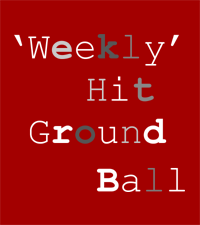 It was a historic week in MLB as, for the first ever time, managers had the power to challenge umpiring decisions with a referral to a replay system.
It was a historic week in MLB as, for the first ever time, managers had the power to challenge umpiring decisions with a referral to a replay system.
The Toronto Blue Jays’ John Gibbons was the first manager to take the plunge in a Spring Training game against Minnesota Twins last Monday. Replay will be a standard part of MLB from the start of the upcoming regular season and it is being used in a select number of Spring Training games so that all concerned can get a feel for how it will work.
Based on that first experience, the main lesson learned is that the Spring Training version we’ll witness over the next few weeks only provides a partial understanding of the system.
The most obvious point is that no umpiring decision matters all that much in these pre-season friendlies. The pressure of knowing when to use your one guaranteed challenge (you receive a second if the first is upheld), or for an umpire to refer a call themselves from the seventh inning onwards (provided the manager doesn’t have a challenge left) isn’t there. That was always going to be the case, but we’re also seeing that the technicalities of the system are not going to be explored to the full.
Spring Training games generally are only covered by a small number of cameras – in fact the majority of games aren’t shown on TV at all – so there is a much-reduced selection of camera angles available than there will be during the regular season. Additionally, the off-field umpire is reviewing the footage in a broadcast truck outside the ballpark during Spring, rather than in the custom-designed MLB replay suite in New York.
Whether calls will be easier to make in the regular season remains to be seen. Having more camera angles increases the chances you’ll find the perfect conclusive view, but also gives the umpire all the more options to check.
In the Toronto game, the two separate challenges took 2 and a half minutes and just over 2 minutes respectively to complete. That’s a longer waiting period than MLB is hoping for in the majority of cases and, watching the footage, it does feel like it’s dragging on a bit.
This perhaps will be lessened in a regular season game where fans, at the ballpark and watching at home, will have their attention on the replay story unfolding, not least because there will be an emotional investment in the decision that’s being awaited. Adding that to a reduced consideration time, 90 seconds or so, when all involved get more comfortable with the system and the delay shouldn’t be a major problem.
However, one key element that probably won’t be tested in Spring Training is part of the manager’s decision-making process: advice from the ‘Video Guy’.
The Cleveland Indians announced last week that they had hired a former minor league pitcher to be their replay coordinator and every team will be following suit, at least by assigning the responsibility to existing members of staff if not actually recruiting to the position.
The new replay rules specifically allow such help, most likely as a pragmatic response to the belief that all teams would have tried to create such a link even if it was outlawed:
“To determine whether to challenge a play, personnel in the dugout will be permitted to communicate with a video specialist in the Clubhouse who has access to the same video that is available to Replay Officials. This communication will occur via the dugout phoneâ€.
Without this process in place during Spring Training, we’re not going to get a real handle on the time factor involved in the managers making their decision to challenge a call. Currently the rules state that a manager must make clear his intention to challenge “in a timely manner†and “guidelines will be established to determine whether a challenge is timelyâ€.
How specific those guidelines will be remains to be seen, but if communicating with a “video specialist†is going to be a standard part of the process, you would expect a delay in which a couple of replays could be quickly viewed before making a decision to challenge or not. Add that to the time of the manager putting his challenge in, then for the replay umpires to do their work, and the delay could be quite pronounced.
The replay system is benefitting from the novelty factor in Spring Training and will continue to do so during the first few weeks of the regular season. It’s when replay feels like a standard part of MLB that we will really be able to see it for what it is. The intent of the system – to get the key calls correct – has plenty of support, so it’s the actual implementation that will determine its success in the first year.